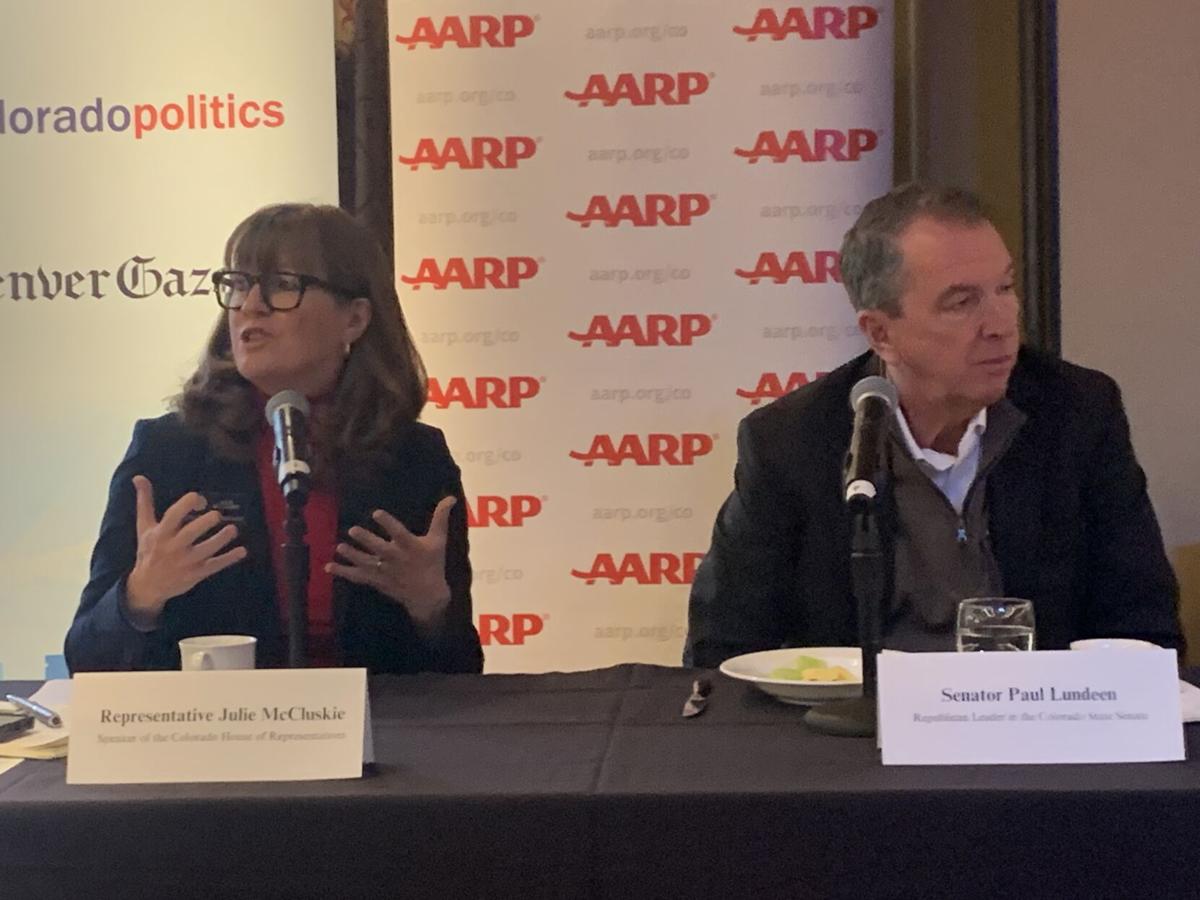Colorado school districts question proposed finance formula update
A bipartisan bill that would update the state’s school finance formula drew criticism from some of the state’s school districts after being introduced in a virtual press conference on Thursday by House Speaker Julie McCluskie.
Dating back to 2017, state lawmakers have met to try and figure out how to rewrite the formula for funding the state’s schools. The efforts continued for over five years, except for 2020, when the committee did not meet during COVID.
However, after a new formula was not established in 2022, the committee efforts were discontinued with a plan to start over altogether.
The bill introduced Thursday s based on the work of a public school finance task force, the successor to the five-year interim committee work, and set up through legislation in 2023.
During Thursday’s press conference, McCluskie said her love for public education has guided her entire legislative career. The legislature has made progress in funding public schools, including paying off the state’s 15-year debt to public schools this year. But one challenge remains: how to allocate more resources to students at the highest risk of falling behind, she said.
Her solution is to modernize the school finance formula, which hasn’t been updated in almost 30 years.
House Bill 1448 is co-sponsored by Assistant House Majority Leader Rep. Jennifer Bacon of Denver, a former Denver Public Schools board member, and in the Senate by Sen. Rachel Zenzinger, D-Arvada and Sen. Paul Lundeen, R-Monument, a former member of the state board of education and who also was on the interim school finance committee for its entire duration.
Denver Public Schools’ Chuck Carpenter, who chaired the task force, supports the bill. What needed to change in the formula was to make its first focus funding for special education, at-risk students, and English language learners, he said. Those are currently known as categoricals, which are often one of the last decisions made in public school finance.
McCluskie told reporters that the new formula is a “wholesale change to ensure that our approach is more student-focused, which includes our at-risk students, our language learners, and our students with special needs.”
The formula also intends to address struggling rural school districts more sustainably.
Over the last several years, rural school districts — those with less than 6,500 students, or 151 of the state’s 179 school districts — have received a one-time boost of $30 million. That “one-time only” has turned into several years of that funding. There was grumbling among lawmakers over that extra funding in the 2024 School Finance Act, but it remains in the bill.
She added that rural schools will finally receive the support they need to deliver a high-quality public education program.
McCluskie acknowledged that some local communities could generate more mill levy funds for school programs but said that creates inequities. “Our job is to make sure that we are delivering state funding in a way that ensures the kids with the greatest needs are getting the greatest help,” she said.
HB 1448 starts with the base per-pupil funding, excluding high school students and online enrollment. Then, it adds in at-risk funding, money for English language learners, and special education. The cost-of-living factor would be applied after that, along with a locale factor, a district size factor, and then “extended” high school and online funding.
So, how much will this new formula cost?
The bill calls for an additional $500 million investment in K-12. It also has a phase-in plan, meaning the formula won’t go into full effect until 2030-31. McCluskie said about $300,000 per year will also go to a handful of small rural districts to hold them harmless.
McCluskie said it’s a six-year phase-in, with one-sixth of that $500 million, or about $83 million, added annually. She said making an $83 million annual increase is a “sustainable pathway.”
But superintendents representing some of the state’s largest districts, rural districts, and districts with minority-majority enrollment levels worry the funding stream for that $500 million is not sustainable. They also worry McCluskie is rolling out a formula when all the information required under last year’s bill hasn’t been completed yet.
In a March 25 letter to McCluskie, superintendents from some of the state’s largest school districts, such as Jeffco and Douglas County, and five in El Paso County, questioned the funding stream for the new formula, raising the specter that it could cause the state to resurrect the budget stabilization factor.
They wrote that the $500 million comes from the State Education Fund, a limited one-time funding source. Without an ongoing source, “this sets all Colorado districts up to fall off a fiscal cliff,” the letter said. They claimed the districts McCluskie most wants to help will face the worst problems.
The superintendents said the bill’s timing doesn’t work either. Under the 2023 bill, the Public-School Finance Task Force is required to conduct school finance adequacy studies. “We struggle to understand why any changes would be brought forward without the consideration of this essential information,” the letters states.
As to the pending study from the 2023 legislation, Rep. Bacon said it’s inevitable that the study will say, “more money…Let’s just stipulate to that right up front.”
The superintendents also questioned whether the bill jells with Amendment 23, the voter-approved ballot measure from 2000 that requires annual adjustments based on inflation.
Then there’s the issue of ballot measures, several of which are being contemplated, that would cap property tax increases without a “carve-out” for K-12. That could also put school funding at risk, and given those ballot measures and their unknown impact on the state’s financial picture, “this is not the right time for changes to the funding formula,” the superintendents said in the letter.
In support of HB 1448, Heather Tritten, President and CEO of the Colorado Children’s Campaign, said in a statement, “The existing formula has resulted in the state sending more money per pupil to some of Colorado’s most well-resourced school districts than to districts where students face the most barriers to educational opportunity.
“With this proposal, Colorado has the opportunity to make sure that every child has what they need to thrive – and that our public school system is more equitable and more effective than ever before.”
McCluskie addressed the concerns over the property tax ballot measures in November. She explained that the bill contemplates recessions and other issues and has a provision to pause implementation if necessary.
Lundeen said the school finance formula change will make education funding more focused on students.
“For too long, the formula has been focused on the institutions and not on the unique natures of the students who show up on the doorsteps of our schools and whom we seek to serve. Fully funding K-12 education to our constitutionally mandated responsibility was last year’s legislative success. Making the formula about the students is this year’s goal,” Lundeen said.
At least one student hopes the change in the school finance formula will mean more support for teachers.
Wyatt Glasser, a sophomore at Rangeview High School in Aurora, said his sister, who is in elementary school, is on her third long-term substitute in fifth grade, repeating what happened in third grade.
One teacher left because of a lack of support, Glasser said. “Having this many changing and transitory teachers has made my sister’s and her classmate’s education suffer.”
Glasser also pointed to low teacher pay. More equitable funding would help the schools that need the most to get the quantity of materials they need to teach and support their students in and out of the classroom.
The Greeley Evans 6 School District, with its high at-risk population, is likely to benefit from the new formula.
Deidre Pilch, the superintendent of Greeley-Evans, said her district has a free and reduced lunch rate of 71.3%, which makes it a high-poverty district. Nearly 20% of the district’s students are English language learners. Nearly 5% face homelessness. There are more than 78 languages spoken in the district.
“I’m very excited about this formula,” Pilch said. She acknowledged the concerns about how the formula will impact every district but said it is time to update it to be more equitable.
More funding will allow her district to offer more extended school day opportunities, more health and family services, food pantries, laundry facilities, parenting classes and to hire specialized interventionists, she said.







